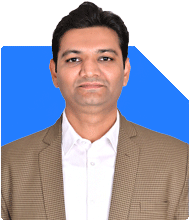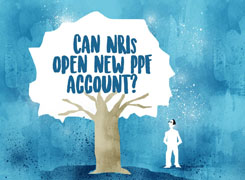Can 44-year-old earning Rs.2 lakhs monthly with Rs.30 lakhs savings comfortably retire by 50 in Chandigarh with Rs.1.25 lakhs monthly expense?
Ramalingam Kalirajan |8442 Answers |Ask -Follow
Mutual Funds, Financial Planning Expert - Answered on Jul 27, 2024
He has an MBA in finance from the University of Madras and is a certified financial planner.
He is the director and chief financial planner at Holistic Investment, a Chennai-based firm that offers financial planning and wealth management advice.... more

I am 44 Yrs of Age, My earning is Rs. 2 lakh per month. my savings are like FD- 15 Lakh, RD- 20k Monthly, Mutual Fund SIP- 40K monthly (30 lakh), Lumsum-07 Lakh, Stocks (Share)- 5 lakh. i have a baby girl of 6 years of age. in PPF- 3 lakh Rs. i want to retire at 2030 when i turn to 50 years of my age. Suggest me how much corpus i shold make to live a comfortable life in chandigarh. my current monthly expences are like 1,25,000/ monthly.
Age: 44 years
Monthly Income: Rs 2 lakh
Monthly Expenses: Rs 1.25 lakh
Savings:
FD: Rs 15 lakh
RD: Rs 20,000 monthly
Mutual Fund SIP: Rs 40,000 monthly (Total: Rs 30 lakh)
Lump Sum Investments: Rs 7 lakh
Stocks: Rs 5 lakh
PPF: Rs 3 lakh
Goals:
Retirement Age: 50 years (2030)
Child's Future: Consider future education and marriage expenses
Corpus Required for Comfortable Retirement
Estimating Retirement Corpus
1. Monthly Expenses Post-Retirement:
Current Expenses: Rs 1.25 lakh per month
Assumed Inflation Rate: 6% per annum
Expenses at Retirement: Rs 1.76 lakh per month (approx.)
2. Corpus Calculation:
Retirement Period: Assume life expectancy of 85 years (35 years post-retirement)
Required Corpus: The corpus should be able to generate Rs 1.76 lakh per month (inflation-adjusted) for 35 years.
Steps to Calculate Corpus
Annual Expenses Post-Retirement:
Rs 1.76 lakh * 12 = Rs 21.12 lakh
Future Value of Annual Expenses:
Adjust for inflation over 35 years.
Corpus Required:
Use retirement calculators to determine exact corpus.
Investment Strategy to Achieve the Corpus
1. Continue and Increase SIPs:
Current SIP: Rs 40,000 monthly
Increase SIP Amount: Gradually increase SIPs with salary hikes.
Equity Focus: Prioritize equity mutual funds for higher returns.
2. Maximize PPF Contributions:
Current PPF: Rs 3 lakh
Maximize Contributions: Contribute Rs 1.5 lakh per year to PPF for tax-free returns.
3. Lump Sum Investments:
Current Lump Sum: Rs 7 lakh
Future Investments: Allocate additional lump sums into diversified mutual funds.
4. Stock Investments:
Current Stocks: Rs 5 lakh
Diversification: Ensure a diversified stock portfolio to reduce risk.
5. Fixed Deposits and Recurring Deposits:
Current FD: Rs 15 lakh
Current RD: Rs 20,000 monthly
Reallocate Funds: Gradually shift FD and RD funds into higher-yield investments like mutual funds.
Child's Future Planning
1. Education Fund:
Estimate Costs: Plan for higher education costs, considering inflation.
Dedicated SIP: Start a dedicated SIP for child’s education.
2. Marriage Fund:
Estimate Costs: Plan for marriage expenses.
Long-Term SIP: Start a long-term SIP for marriage.
Final Insights
1. Regularly Review Investments:
Annual Review: Monitor and adjust your investments annually.
Consult CFP: Seek advice from a Certified Financial Planner for tailored guidance.
2. Tax Planning:
Maximize Deductions: Utilize available tax deductions to optimize savings.
Diversify: Ensure investments are tax-efficient.
3. Emergency Fund:
Maintain Liquidity: Keep an emergency fund equal to 6 months of expenses.
Easily Accessible: Ensure it is easily accessible.
4. Health Insurance:
Adequate Coverage: Ensure adequate health insurance coverage for you and your family.
5. Retirement Planning:
Sustainability: Ensure your retirement corpus is sustainable for at least 35 years.
Inflation-Proof: Plan for inflation-adjusted expenses.
By following these steps, you can aim to build a robust retirement corpus and secure a comfortable life in Chandigarh post-retirement.
Best Regards,
K. Ramalingam, MBA, CFP,
Chief Financial Planner,
www.holisticinvestment.in
You may like to see similar questions and answers below
Ramalingam Kalirajan |8442 Answers |Ask -Follow
Mutual Funds, Financial Planning Expert - Answered on May 24, 2024
Ramalingam Kalirajan |8442 Answers |Ask -Follow
Mutual Funds, Financial Planning Expert - Answered on Jul 06, 2024
Ramalingam Kalirajan |8442 Answers |Ask -Follow
Mutual Funds, Financial Planning Expert - Answered on Jul 08, 2024
Ramalingam Kalirajan |8442 Answers |Ask -Follow
Mutual Funds, Financial Planning Expert - Answered on Dec 13, 2024
Dr Nagarajan J S K |401 Answers |Ask -Follow
NEET, Medical, Pharmacy Careers - Answered on May 15, 2025
Dr Nagarajan J S K |401 Answers |Ask -Follow
NEET, Medical, Pharmacy Careers - Answered on May 15, 2025
Dr Nagarajan J S K |401 Answers |Ask -Follow
NEET, Medical, Pharmacy Careers - Answered on May 15, 2025
Dr Nagarajan J S K |401 Answers |Ask -Follow
NEET, Medical, Pharmacy Careers - Answered on May 15, 2025
Dr Nagarajan J S K |401 Answers |Ask -Follow
NEET, Medical, Pharmacy Careers - Answered on May 15, 2025
Dr Nagarajan J S K |401 Answers |Ask -Follow
NEET, Medical, Pharmacy Careers - Answered on May 15, 2025
Vipul Bhavsar |83 Answers |Ask -Follow
Tax Expert - Answered on May 15, 2025
Vipul Bhavsar |83 Answers |Ask -Follow
Tax Expert - Answered on May 15, 2025
Vipul Bhavsar |83 Answers |Ask -Follow
Tax Expert - Answered on May 15, 2025
Vipul Bhavsar |83 Answers |Ask -Follow
Tax Expert - Answered on May 15, 2025











.jpg)












